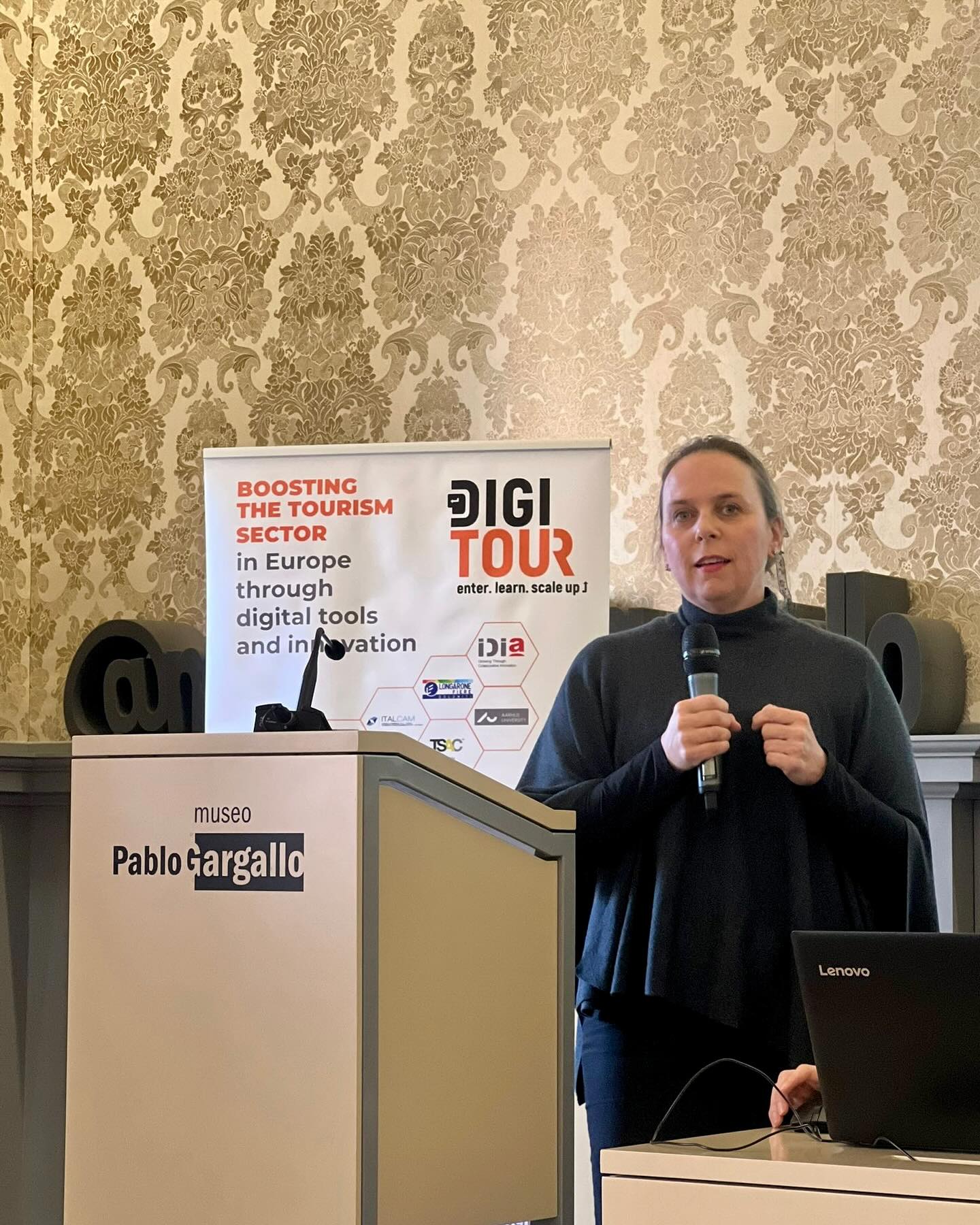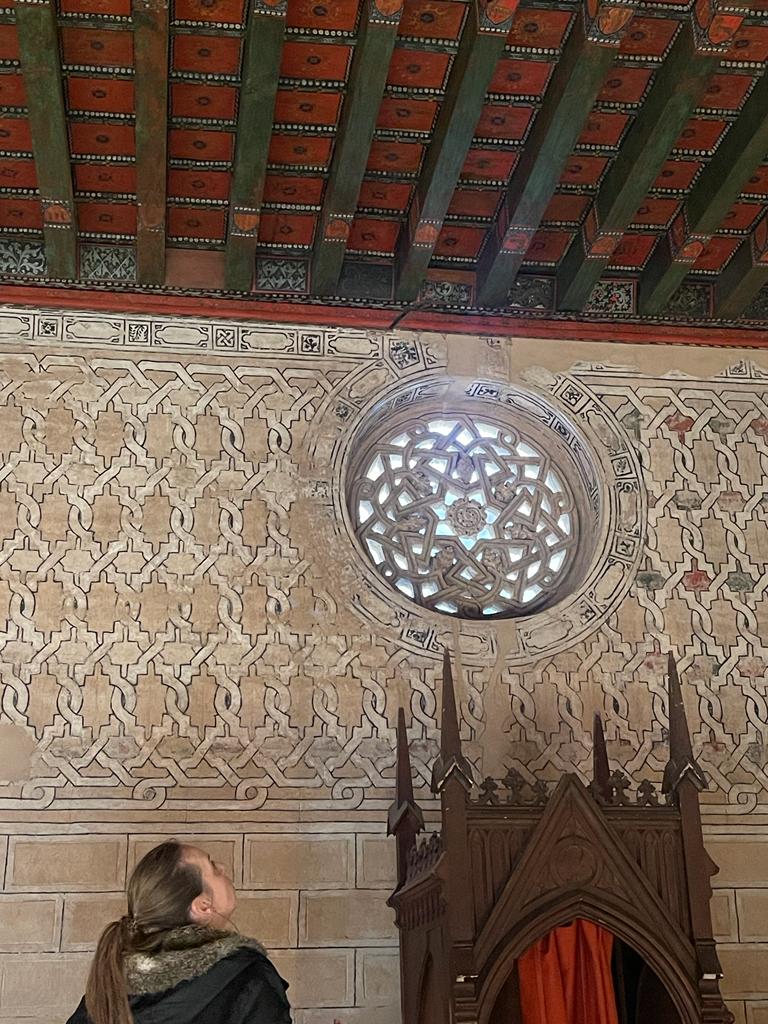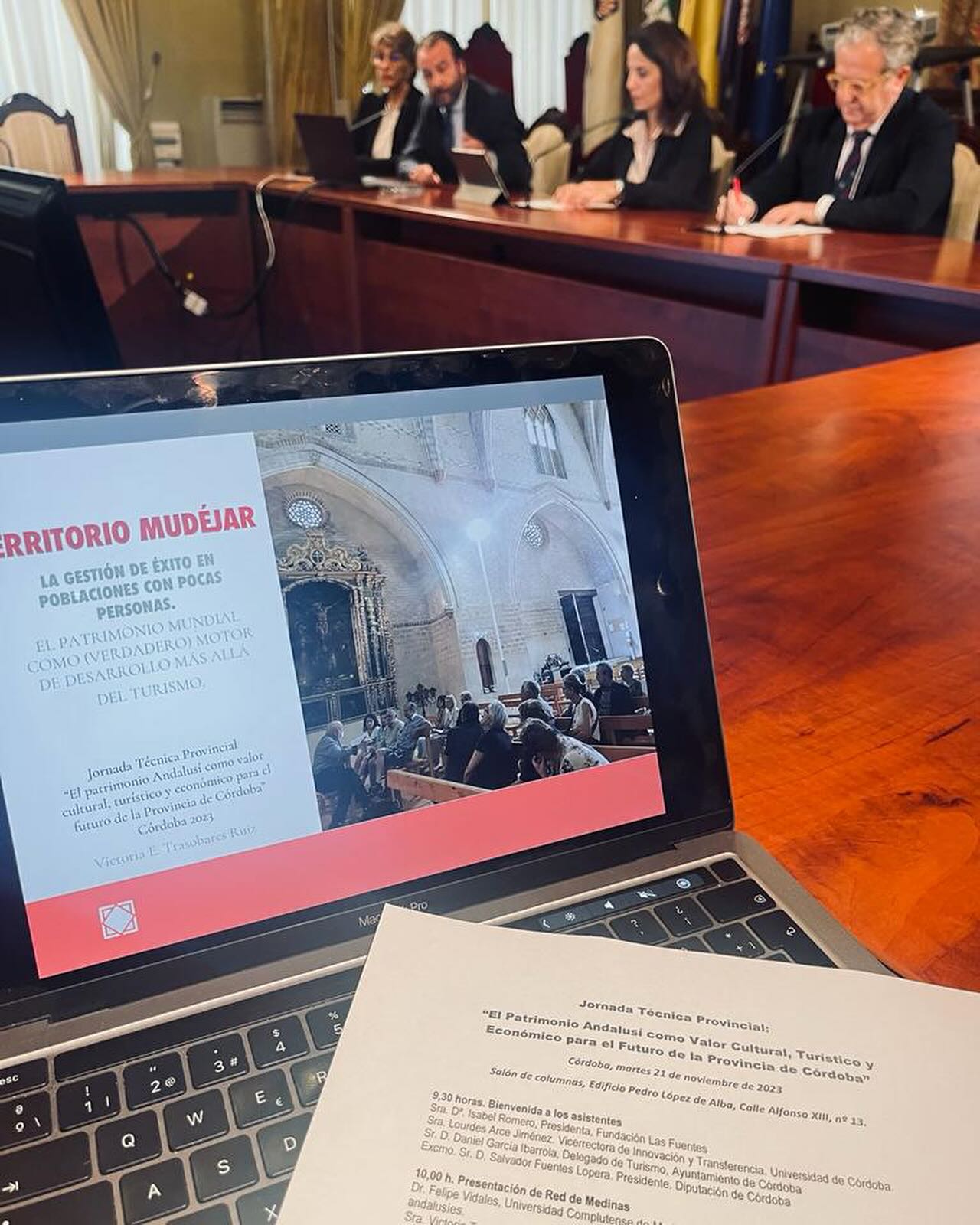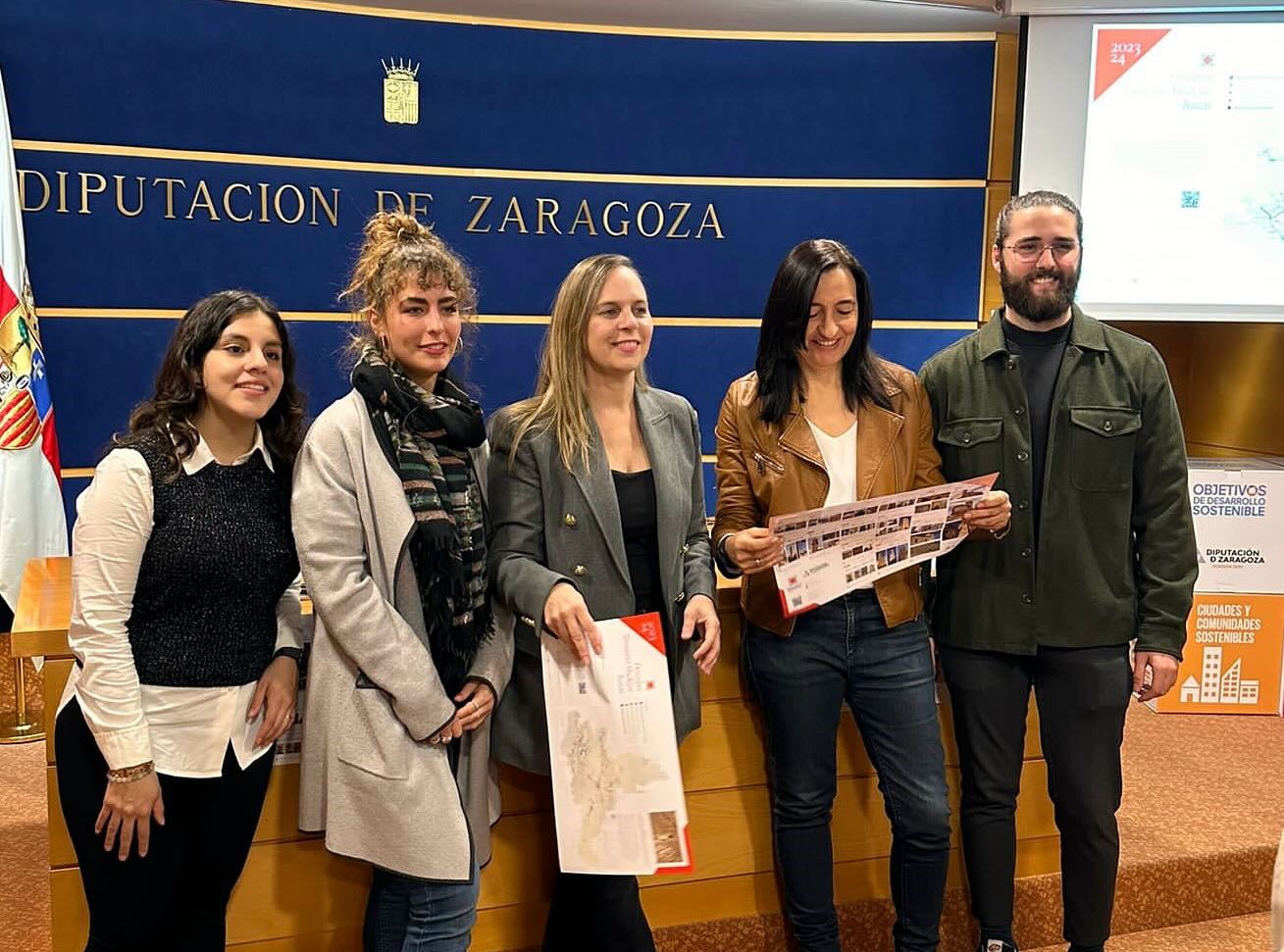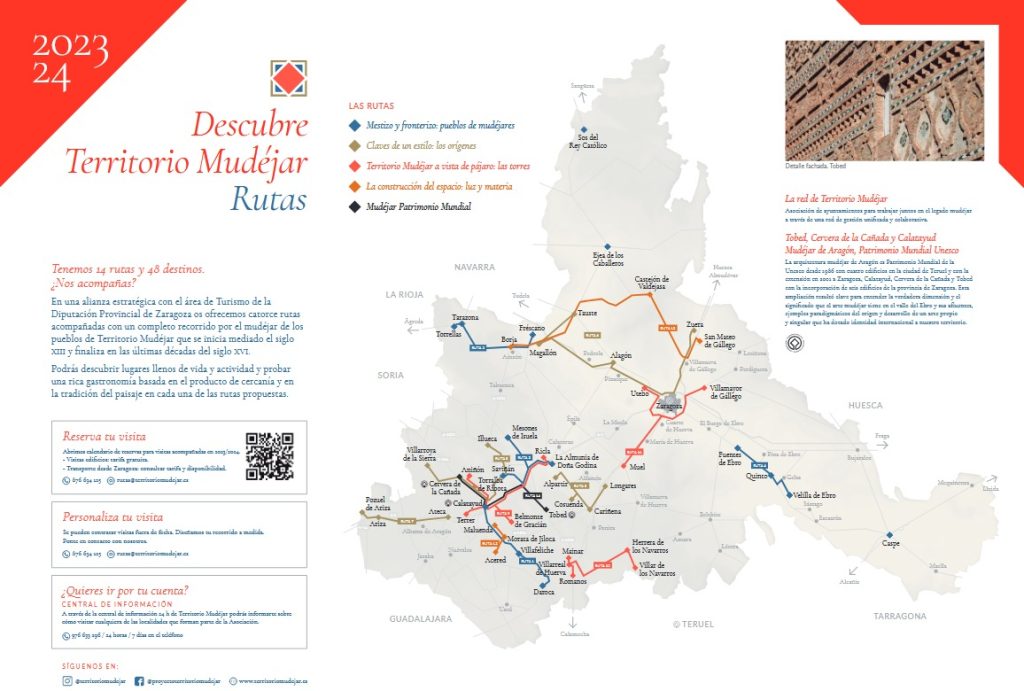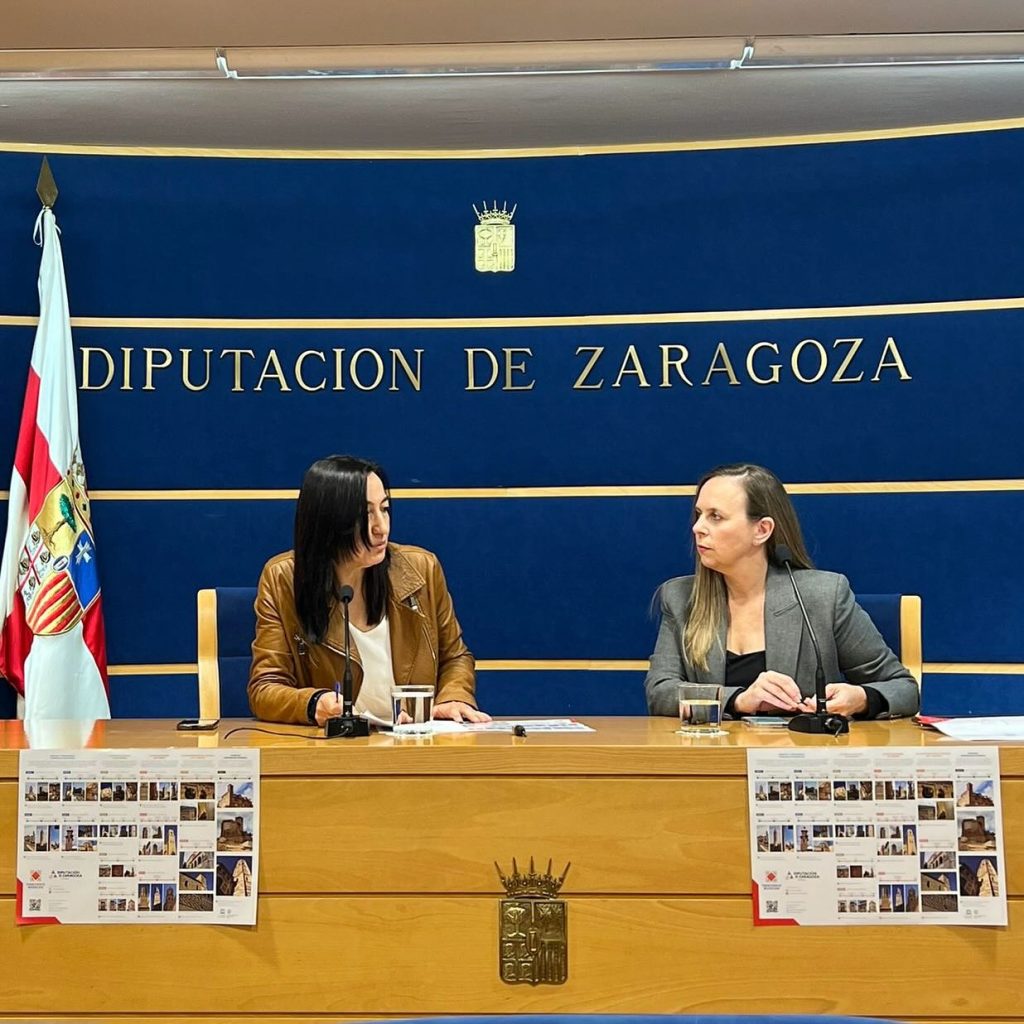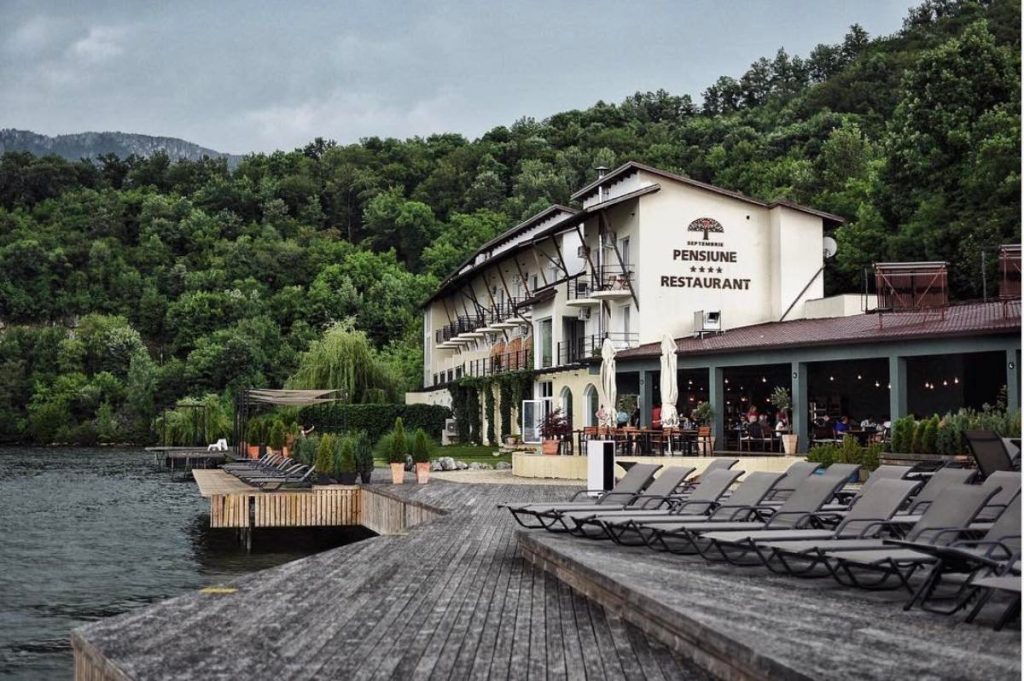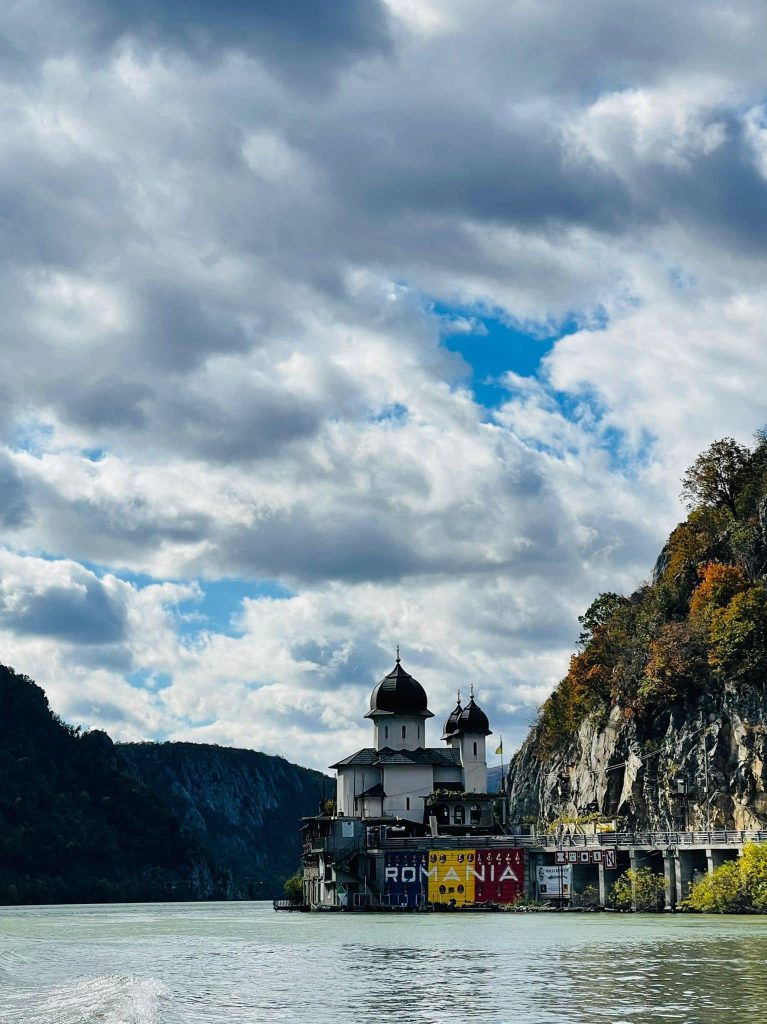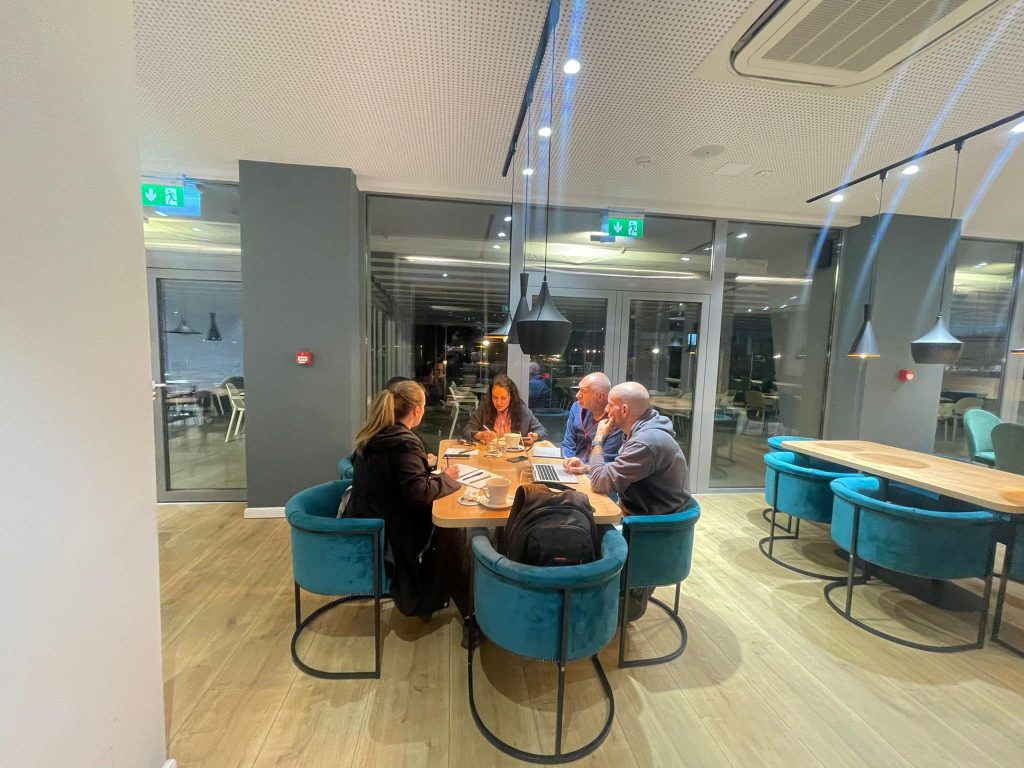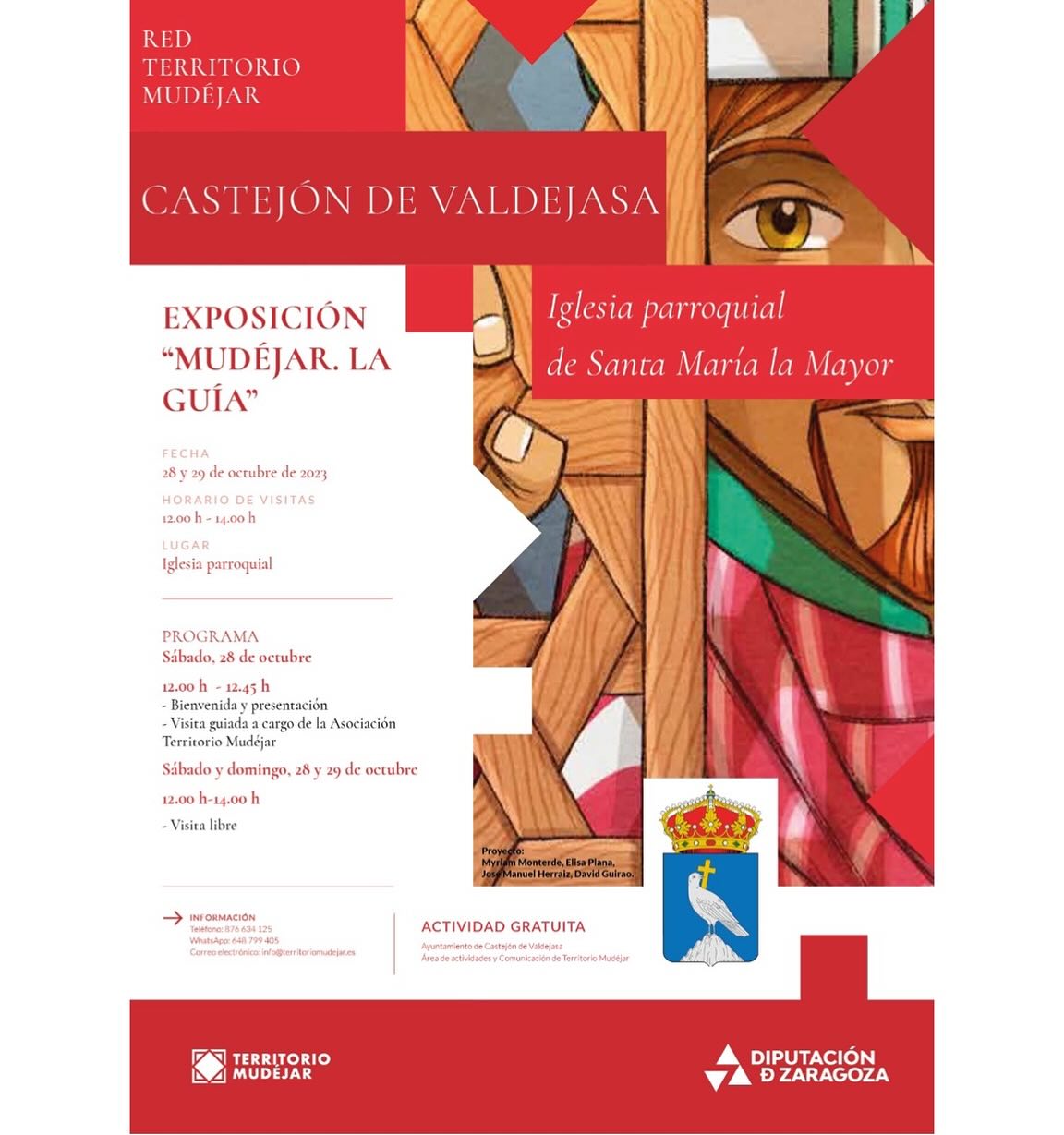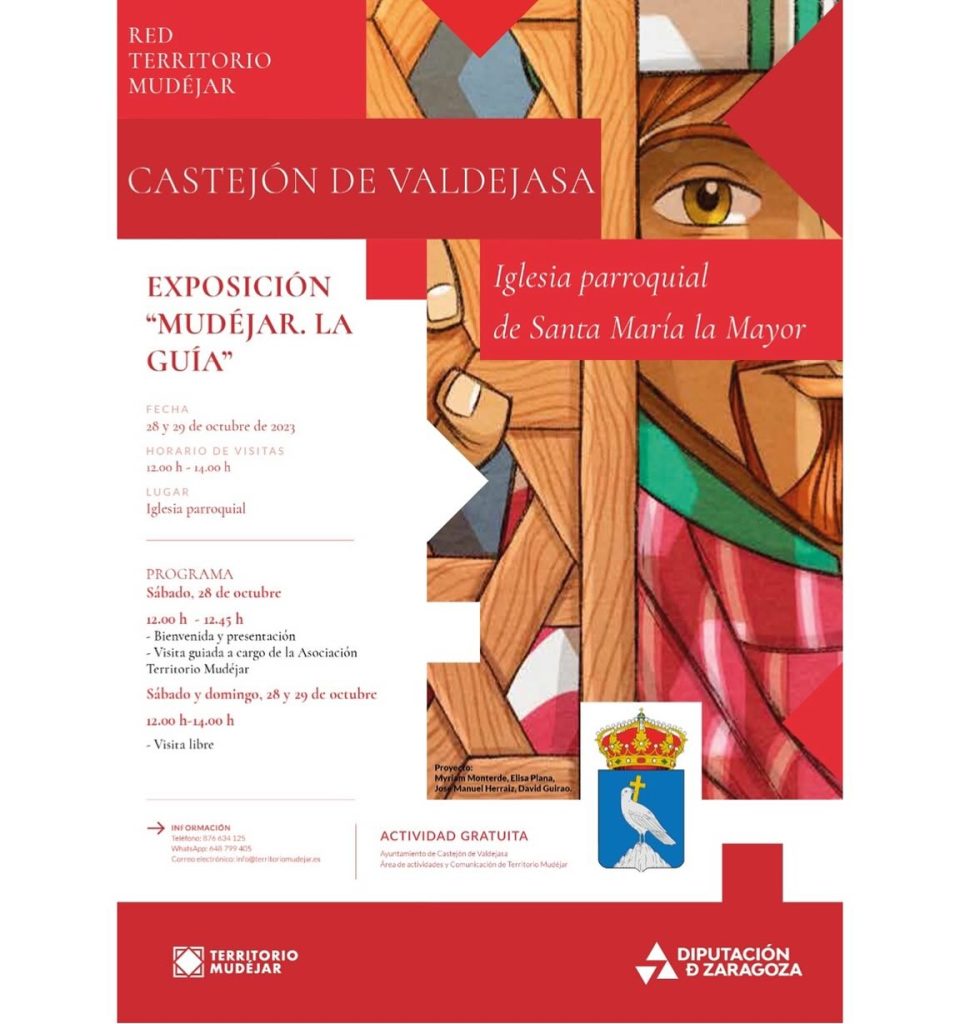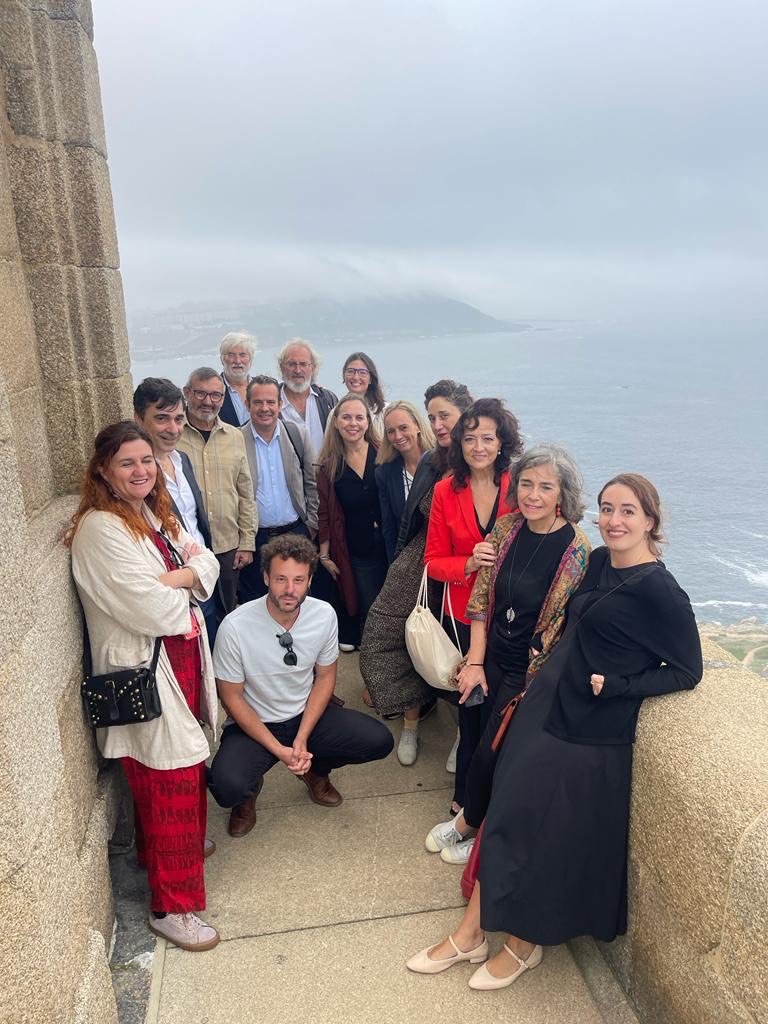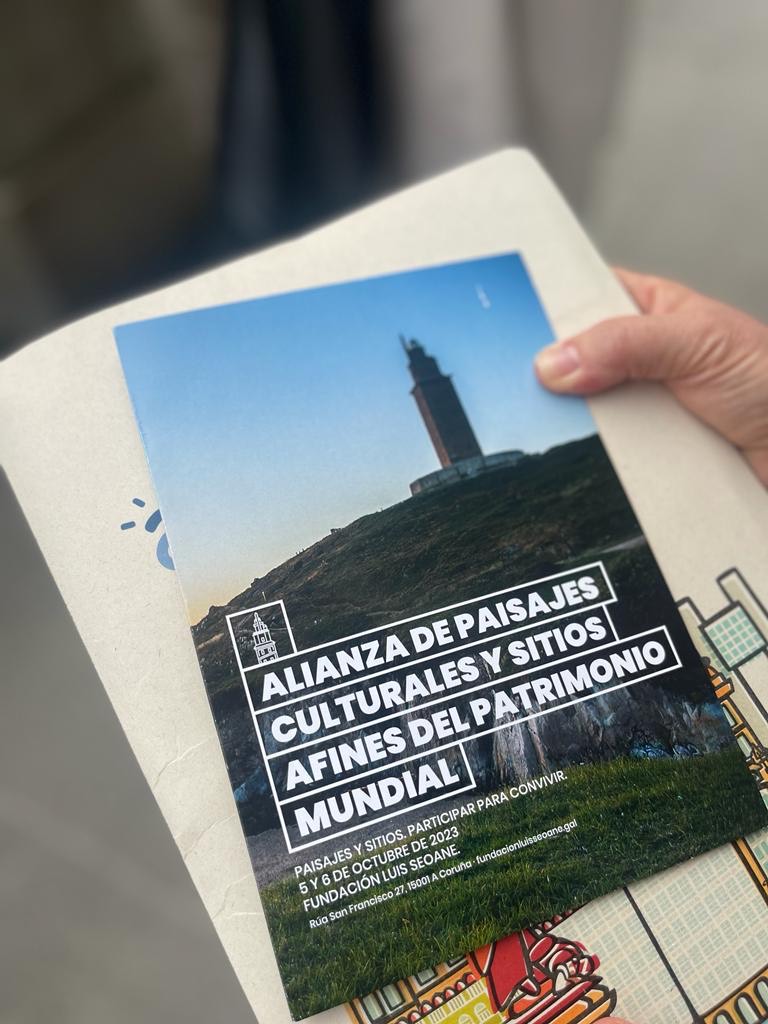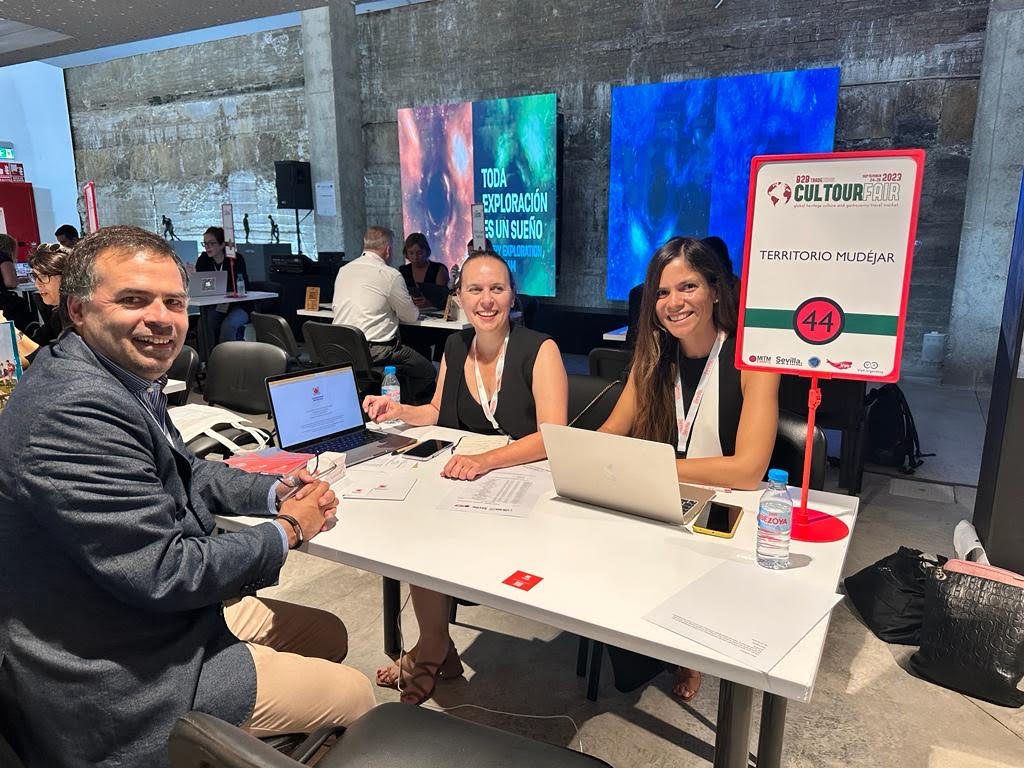Territorio Mudéjar has added 8 municipalities to its network, making a total of 47 associated localities that benefit from an action programme to strengthen the management, research and dissemination of Mudejar heritage, as well as the creation of a network of professionals and jobs linked to the management of these historical-artistic resources.
The association of municipalities, promoted by the Diputación de Zaragoza, has ratified the incorporation of the towns of Ariza, Calatorao, Cariñena, Gelsa, Herrera de los Navarros, Muel, Pozuel de Ariza and Tarazona in its general assembly of members.
At the assembly, chaired by the mayor of Tobed, Juan Antonio Sánchez Quero, and attended by the mayors of the member municipalities, Victoria Trasobares, director of the entity, presented the action plan to be developed in 2024.
The programme maintains a commitment to research for the development of projects on Mudejar culture through the Gonzalo M. Borrás Gualis Research and Project Stays, through which some 40 professionals have already participated. Currently, three stays and three artistic residencies are underway and there will be a new call for applications in 2024. In addition, the organisation continues to strengthen its network of heritage management professionals through curricular and extracurricular internship programmes and participation in programmes such as Desafío-Arraigo and UNITA: 29 students have already been trained at Territorio Mudéjar and this year there will be a new call for internships.
Territorio Mudéjar will continue to offer personalised management to its members, studying their needs and signing special agreements with them to form technical and scientific advisory work teams for projects such as the Daroca Destination Tourism Sustainability Plan, or the special agreements with Fuentes de Ebro, Ricla and San Mateo de Gállego to carry out specific activities.
The entity will continue to make progress on key projects such as Didactics of the Mudejar -which makes it possible to generate heritage-based learning activities for rural schools and to make available materials; the Territorio Mudéjar routes by the partner localities, which have been a success with the public at their launch and are already highly occupied for the coming months; or the project Study of Aragonese Mudejar art, the legacy of Gonzalo M. Borrás Gualis, which implies having a growing, interdisciplinary and international working team, a high-level European team that can lay the foundations for future European and international cooperation work.
In parallel, the entity is working on framework agreements to create teams of solvent partners such as the Medina Network, to form a working team and collaborate on international tourism experience projects; the Alliance of Cultural Landscapes, of which Territorio Mudéjar has been a member since November last year; and the Turin Polytechnic Institute.
In addition, Territorio Mudéjar will continue to participate in national and internationalevents that position the entity as an example of management and in international projects such as the continuity of the Digitour project or fairs such as Cultourfair 2024.

